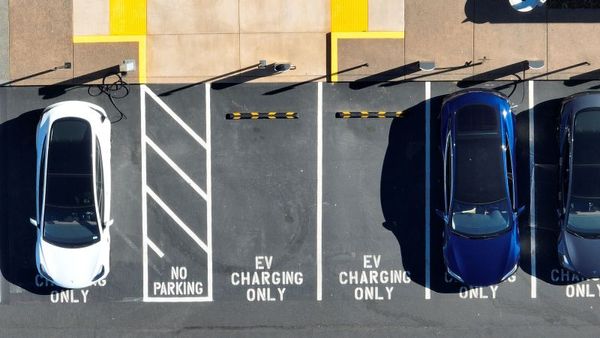Electric cars are the way of the future, but there are still some issues holding back many potential buyers. Limited range, heavy and expensive batteries, and slow charging times have been major concerns. However, numerous companies claim to have the technology to address these problems and revolutionize the industry.
One standout player in this field is Toyota, which believes it is on the verge of a breakthrough. Other automakers are also collaborating with battery companies to develop this new technology. This breakthrough is centered around a key innovation known as a “solid state battery.” While this technology has been on the horizon for a few years, it hasn’t quite reached the market yet.
Automotive giants like Stellantis, Hyundai, and Volkswagen have also partnered with firms working on solid state batteries. These batteries offer the potential for smaller, lighter, and more powerful energy solutions. Moreover, they could potentially be safer, reducing the risk of fires in case of a collision.
The main difference between solid state batteries and the traditional lithium-ion batteries used in electric cars lies in the electrolyte component. While lithium-ion batteries utilize a liquid electrolyte, solid state batteries employ a solid one. This solid electrolyte makes solid state batteries safer since it mitigates the risk of uncontrolled energy flow and subsequent fires in the event of a break or puncture, unlike liquid electrolytes.
Additionally, the density of solids allows for smaller battery cells: the electrolyte occupies less space. However, other companies are working on alternative strategies that can also reduce the size and weight of batteries while improving charging speed.
The main challenge faced by these companies, as well as the automakers investing in them, is how to economically produce these advanced batteries in the quantities required to make electric vehicles affordable. Nevertheless, various start-up companies are actively exploring different chemical combinations and physical structures for their batteries. As of now, no single superior technology has emerged, according to William Kephart, a battery researcher at consulting firm P3 Group.
Fast charging times are a crucial consumer demand, and solid-state batteries face this challenge. Due to the rigid nature of solid materials, it takes more time for lithium ions to move through them compared to liquids. This slower movement results in longer charging times and slower release of energy, ultimately affecting a vehicle’s acceleration.
However, solid-state battery company Quantumscape claims their batteries, which incorporate a small amount of liquid in their design (but not in the electrolyte), can charge even faster than typical lithium-ion batteries. Consequently, solid-state batteries tend to be more expensive due to their higher lithium content, a costly material. Nevertheless, if lithium prices decrease as more sources become available, the cost gap may narrow.
Factorial, a company with investments from Stellantis and Mercedes, asserts that its solid-state batteries use less lithium than traditional batteries, potentially reducing costs as production scales up. Factorial CEO Siyu Huang believes that the competitive costing of solid-state batteries is achievable since lithium is not a scarce material. Quantumscape also claims that their battery design eliminates graphite, reducing costs and carbon emissions during manufacturing.
While solid-state batteries show great promise, other companies are working on enhancing traditional liquid-electrolyte batteries. These improvements could make the existing technology more efficient without the need for a complete overhaul. For instance, OneD has developed technology that improves battery performance while keeping production processes mostly unchanged. This allows for easier adoption by battery manufacturers and automakers.
Moreover, some companies are exploring semi-solid state batteries that blend elements from both solid and liquid designs. This approach combines the benefits of solid-state batteries with the familiar fluid-based architecture of traditional batteries.
In the end, it is unlikely that a single battery technology will dominate the electric vehicle market. Different types of batteries will be matched to specific vehicles and the markets they serve, similar to how automakers offer different engine options across various models and markets. General Motors spokesperson Phil Lienert highlights that their Ultium electric vehicle design is engineered to accommodate various battery solutions to cater to their diverse customer base.
In conclusion, solid state batteries hold tremendous potential for transforming electric vehicles, offering lighter weight, increased power, and improved safety. However, other battery technologies, including enhanced liquid-electrolyte designs, are also being explored. The future of electric mobility will likely see a mix of battery technologies tailored to the specific needs of different vehicles and markets.





